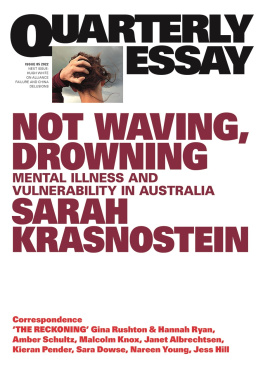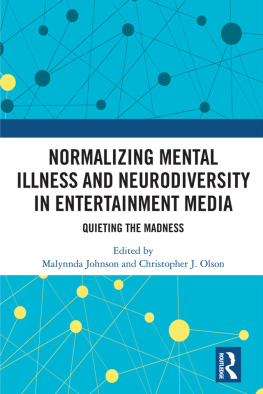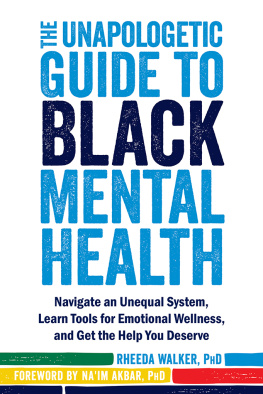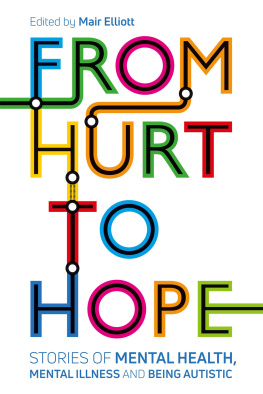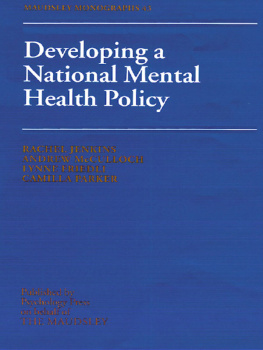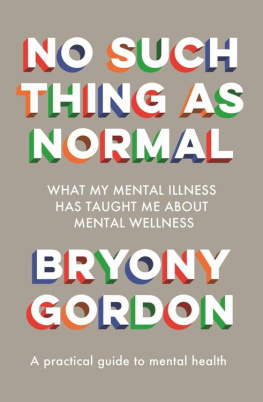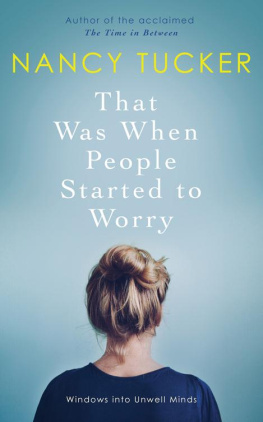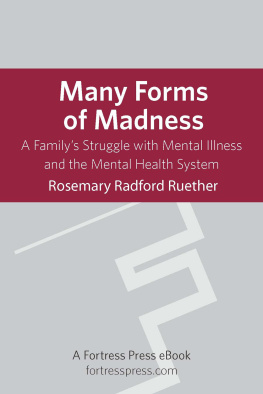Quarterly Essay
Quarterly Essay is published four times a year by Black Inc., an imprint of Schwartz Books Pty Ltd. Publisher: Morry Schwartz.
ISBN 9781743822098 ISSN 1832-0953
All Rights Reserved.
No part of this publication may be reproduced, stored in a retrieval system, or transmitted in any form by any means electronic, mechanical, photocopying, recording or otherwise without the prior consent of the publishers.
Essay & correspondence retained by the authors.
Subscriptions 1 year print & digital (4 issues): $79.95 within Australia incl. GST. Outside Australia $119.95. 2 years print & digital (8 issues): $149.95 within Australia incl. GST. 1 year digital only: $49.95.
Payment may be made by Mastercard or Visa, or by cheque made out to Schwartz Books. Payment includes postage and handling.
To subscribe, fill out and post the subscription card or form inside this issue, or subscribe online:
quarterlyessay.com
Phone: 61 3 9486 0288
Correspondence should be addressed to:
The Editor, Quarterly Essay
2224 Northumberland Street
Collingwodd VIC 3066 Australia
Phone: 61 3 9486 0288 / Fax: 61 3 9011 6106
Email:
Editor: Chris Feik. Management: Elisabeth Young. Publicity: Anna Lensky. Design: Guy Mirabella. Assistant Editor: Kirstie Innes-Will. Production Coordinator: Marilyn de Castro. Typesetting: Tristan Main.
We saw aspects of a mental health system that we had thought confined to history. Sadly, this was not the case.
The Oakden Report: The report of the Oakden Review, SA Health, 2017
Unsurprisingly, many of the reforms recommended in this Inquiry report have been proposed before.
Productivity Commission, Inquiry Report into Mental Health, Vol. 1, 2020
If history is any indication, reform will not be easy. Despite best endeavours, previous efforts to redesign the mental health system in Victoria, and across Australia more broadly, have not been realised. As a result, the states mental health system has catastrophically failed to live up to expectations and is unprepared for current and future challenges. This persistent gap between the rhetoric of past inquiries and the reality for people living with mental illness or psychological distress... has been described by some as devastating.
Royal Commission into Victorias Mental Health System, FinalReport, Vol. 5, 2021
The patient brings out of the armoury of the past the weapons with which he defends himself against the progress of the treatment weapons which we must wrest from him one by one. We have learned that the patient repeats instead of remembering, and repeats under the conditions of resistance. We may now ask what it is that he in fact repeats or acts out... we have to do our therapeutic work on it, which consists in a large measure in tracing it back to the past.
Sigmund Freud, Remembering, Repeating and Working-Through, 1914
A strange picture and strange prisoners.
No more strange than us, I said.
Plato, The Republic
NOT WAVING, DROWNING | Mental illness and vulnerability in Australia |
Sarah Krasnostein |
Australians today are a complacent people but our boast of living in a lucky country [is] at times just strident enough to betray that we cannot yet take our material comforts utterly for granted, wrote J.P. Parkinson, a psychiatrist, forty years ago in the Australian and New Zealand Journal of Psychiatry. He continued, It would be surprising if we could, considering it is less than two hundred years since our European forebears were regarding a harsh and barren land with horror and despair. John White, principal surgeon of the First Fleet and of the colony of New South Wales, called the country a place so forbidding and so hateful as only to merit execrations and curses a source of expense to the mother country and of evil and misfortune to its inhabitants. Is there any link across perhaps a mere four or five generations between that view and our own?
Medical histories of settlement have characterised many of the convicts as mentally ill. That would be unsurprising, given the desperation that often led to their crimes, their social isolation and the experience of a death sentence being imposed, then commuted to transportation for life to a place that may as well have been the moon.
Construction of the first purpose-built psychiatric facility in Australia, the Tarban Creek Lunatic Asylum in New South Wales, finished in 1838. Previously, mentally ill people were housed in the town gaol at Parramatta or the female factory or the former convict barracks of the abandoned government farm at Castle Hill, where the first doctors were convicts themselves and untrained attendants were selected for their size and strength.
The state of Victorias mental hospitals are older than the state of Victoria. The first purpose-built institution opened in 1848 as a local ward of the Tarban Creek asylum. In 1851, it was renamed Yarra Bend Asylum. Above a sinuous trail where the waters of the Merri Creek meet those of the Yarra River, a bluestone building sat surrounded by a rolling landscape which none of its inmates could see. A year passed before reports leaked out. The ensuing parliamentary inquiry heard evidence about patients being sexually and physically abused, filthy facilities, corruption, misappropriation. A new administrator was installed, but conditions continued to deteriorate. There were 251 inmates by 1855; 450 by 1858. A proposal for a new mental hospital in Kew stalled in parliament. So Yarra Bend expanded, new wards built cheaply around the bluestone building, all of it always about to close, no use throwing good money after bad. By 1870, Yarra Bend housed over 1000 people. It operated for another fifty-five years.
For some time back, a reader named Humanitas wrote to The Argus in 1874, the bodies of patients who die in the Yarra Bend are buried by contract; and the contractor is in the habit of conveying the dead bodies to the cemetery in an open spring cart, without a particle of clothing except a small bit of well-worn oil cloth. The letter continued:
The effluvia from the cart is often something horrible, and to make the matter worse, the contractor is in the habit of driving along this road at the rate of about 10 miles an hour portions of the road are rough patches of new metal etc.
Rattle his bones over the stones,
Hes only a looney whom nobody owns.
Surely this should not be allowed in this Christian land...
Not even a century into settlement, there was a glaring gap between values and behaviour between the offer of asylum and the reality. That gap remains.
*
As the fate of the institutionalised shows, mental illness in the colonies was deeply stigmatised, despite its prevalence. Stigma is a complex social process that excludes or devalues someone on the basis of a particular characteristic. At the time of the Fifth National Mental Health and Suicide Prevention Plan (2017), the stigma attached to mental illness was so prevalent in Australia that most of us had experienced it. The ever-presence of stigma and discrimination for those with mental illness as the federal Select Committee on Mental Health and Suicide Prevention put it in 2021 was identified as a major barrier to treatment and recovery by both the federal Productivity Commission in 2020 and the Royal Commission into Victorias Mental Health System in 2021. Its impacts are compounded for those who experience additional forms of discrimination, such as Aboriginal and Torres Strait Islander peoples and people who identify as LGBTIQ+.
The sociologist Erving Goffman elaborated his theory of stigma in a slim 1963 study, Stigma: Notes on the Management of Spoiled Identity

